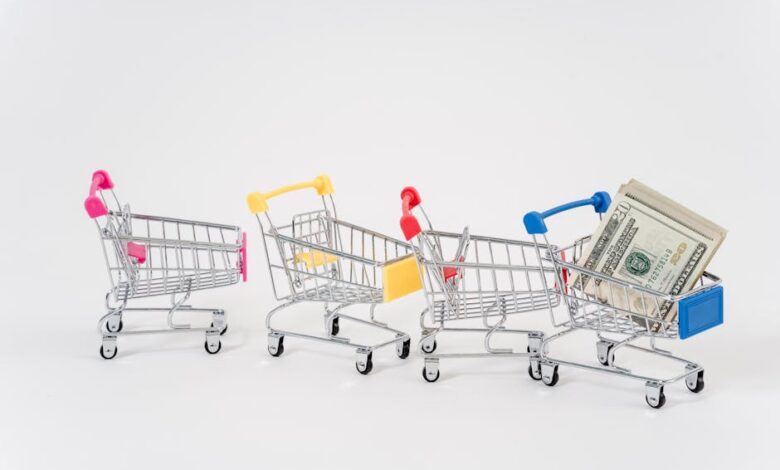Inflation Unveiled: Navigating Its Impact on Purchasing Power, Investment Strategies, and Economic Resilience

Inflation is a pervasive economic force that shapes the financial landscape, affecting everything from the price of everyday goods to the stability of investment portfolios. As prices rise, the purchasing power of consumers diminishes, leading to shifts in spending behavior and overall economic health. This article delves into the multifaceted nature of inflation, exploring its impact on consumer purchasing power, interest rates, and various asset classes. We will also examine effective strategies for protecting your investments against inflationary pressures and draw lessons from historical instances of hyperinflation, which serve as a stark reminder of the potential consequences of unchecked price increases. Additionally, we will analyze how central banks utilize monetary policy to combat inflation and the role of supply chain disruptions in exacerbating these challenges. Finally, we will consider how inflation influences wages and employment, providing a comprehensive overview of this critical economic phenomenon and its implications for individuals and investors alike.
- 1. **Understanding Inflation: Its Effects on Consumer Purchasing Power and Economic Stability**
- 2. **Navigating Inflation: Strategies for Safeguarding Your Investment Portfolio**
- 3. **Lessons from History: Hyperinflation, Monetary Policy, and the Future of Economic Resilience**
1. **Understanding Inflation: Its Effects on Consumer Purchasing Power and Economic Stability**
Inflation is a fundamental economic concept that refers to the general increase in prices and the corresponding decrease in the purchasing power of money. As inflation rises, consumers find that their money buys less than it did before, which can significantly affect their ability to afford goods and services. For instance, if the inflation rate is 3% and wages do not increase at the same pace, consumers effectively experience a reduction in real income, leading to decreased spending power.
The effects of inflation extend beyond individual purchasing power; they can also impact overall economic stability. When inflation is predictable and moderate, it can encourage spending and investment, as consumers and businesses anticipate rising prices and adjust their behaviors accordingly. However, when inflation becomes erratic or excessively high, it can create uncertainty in the economy. This uncertainty may lead consumers to delay purchases, reduce spending, or seek to save more, all of which can slow economic growth.
Moreover, inflation can exacerbate income inequality. Those on fixed incomes, such as retirees relying on pensions, may struggle more than those with the ability to negotiate higher wages or adjust their income based on inflationary trends. As a result, the disparities in purchasing power can widen, leading to societal tensions and challenges for policymakers.
In summary, understanding inflation is crucial for grasping its profound effects on consumer purchasing power and overall economic stability. It shapes not only individual financial decisions but also broader economic conditions, influencing everything from investment strategies to government policies aimed at maintaining a stable economic environment.
2. **Navigating Inflation: Strategies for Safeguarding Your Investment Portfolio**
Navigating inflation requires strategic planning to protect and potentially enhance your investment portfolio. Here are several effective strategies to consider:
1. **Diversification**: One of the most fundamental principles of investing, diversification involves spreading your investments across various asset classes. This can help mitigate risks associated with inflation. Consider including assets such as real estate, commodities, and inflation-protected securities (like TIPS) which often perform well during inflationary periods.
2. **Invest in Real Assets**: Real assets such as real estate and commodities tend to retain value and sometimes appreciate during inflation. Real estate, in particular, can provide rental income that may increase with inflation, offering a hedge against rising prices.
3. **Equities**: Historically, equities have outpaced inflation over the long term. Investing in companies with strong pricing power—those that can pass on increased costs to consumers—can help maintain your portfolio's value. Sectors like consumer staples and utilities may provide some resilience in inflationary environments due to their essential nature.
4. **Inflation-Linked Bonds**: Consider allocating a portion of your portfolio to inflation-linked bonds, such as Treasury Inflation-Protected Securities (TIPS). These bonds adjust their principal value based on inflation, ensuring that your investment grows in real terms.
5. **Commodities and Precious Metals**: Commodities, including gold and silver, often serve as safe havens during inflationary periods. Gold, in particular, has a long-standing reputation as a store of value, making it a popular choice for investors seeking protection against currency devaluation.
6. **Review and Adjust Asset Allocation**: Regularly reviewing and adjusting your portfolio to reflect changing economic conditions can be crucial. During inflationary times, you may want to shift towards assets that tend to perform better in such environments while reducing exposure to fixed-income investments that may lose value in real terms.
7. **Stay Informed**: Keeping abreast of economic indicators and central bank policies can provide insights into inflation trends, allowing for timely adjustments to your investment strategy. Understanding the broader economic context can help you anticipate potential inflationary pressures and act accordingly.
By implementing these strategies, investors can better safeguard their portfolios against the adverse effects of inflation, ultimately aiming to preserve and grow their wealth over time.
3. **Lessons from History: Hyperinflation, Monetary Policy, and the Future of Economic Resilience**
Hyperinflation is a phenomenon that can devastate economies, eroding purchasing power and leading to widespread economic instability. Historical examples, such as the hyperinflation in Germany during the Weimar Republic in the 1920s, Zimbabwe in the late 2000s, and more recently in Venezuela, provide critical insights into the consequences of unchecked inflation and the mismanagement of monetary policy. In these cases, governments often resorted to excessive money printing to address fiscal deficits, which ultimately led to a loss of confidence in the currency and skyrocketing prices.
One key lesson from these historical instances is the importance of maintaining a credible monetary policy framework. Central banks play a crucial role in managing inflation expectations through interest rate adjustments and other monetary tools. When inflation spirals out of control, as seen in these examples, the central bank's ability to regain control can be severely hampered. This highlights the necessity for independent and transparent central banking institutions that can act decisively to combat inflation, even when it may be politically unpopular.
Moreover, hyperinflation underscores the interconnectedness of economic policies and the broader societal impacts of inflation. In many cases, the erosion of purchasing power disproportionately affects lower-income populations, leading to increased inequality and social unrest. As such, policymakers must consider not only the economic data but also the social implications of their decisions, fostering resilience in the face of potential inflationary pressures.
Looking to the future, the lessons learned from hyperinflationary episodes remind us of the need for vigilance in economic governance. As economies navigate the complexities of globalization, supply chain disruptions, and changing consumer behaviors, maintaining a balanced approach to monetary policy will be essential. Strategies that incorporate flexibility and adaptability, along with a focus on sustainable economic growth, can help mitigate the risks associated with inflation and bolster economic resilience in an ever-evolving landscape.
In conclusion, inflation is a multifaceted economic phenomenon that significantly influences consumer purchasing power, investment strategies, and overall economic stability. As we have explored, rising prices can erode the value of money, making it essential for consumers and investors alike to understand and adapt to these shifts. By implementing effective portfolio protection strategies and remaining informed about interest rate fluctuations and asset class performance, individuals can better navigate the challenges posed by inflation.
Additionally, historical lessons from periods of hyperinflation remind us of the importance of sound monetary policy and the crucial role central banks play in managing economic stability. Supply chain disruptions have further complicated the inflation landscape, highlighting the interconnectedness of global economies. Ultimately, recognizing the impact of inflation on wages and employment is vital for fostering a resilient workforce capable of adapting to changing economic conditions.
As we move forward, staying informed and proactive will be key to mitigating the adverse effects of inflation and seizing opportunities for growth in an ever-evolving financial environment.





